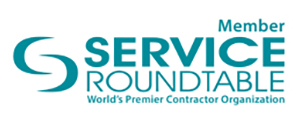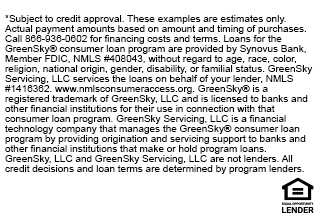High Water Pressure Problems: How PRVs and Expansion Tanks Protect Your Plumbing
High water pressure feels great at the tap, but it quietly wears out a home. Pipes and supply lines see constant strain, faucet cartridges fail early, and water heaters can start venting through the relief valve. The practical fix is to measure what’s actually coming into the house, set it to a safe range, and control the extra pressure created when hot water expands. Do those three things, and the entire system runs smoother and lasts longer.
What Counts as High Pressure and Why It Happens
Most homes are happiest around 50 to 60 PSI. Once pressure pushes past 80 PSI, problems multiply. In Southern California, it’s common to see a normal afternoon reading jump at night when demand drops on the municipal system. Elevation makes it worse. Homes near the bottom of a hill often get higher street pressure, and neighborhoods with booster stations can see bigger swings from day to night.
Clues Your Home is Over the Limit
Watch for repairs that will not stick. A faucet drips again a week after a new cartridge. A toilet keeps cycling even after fresh parts. Washing machine hoses look swollen or have failed once already. Pipes bang when a valve snaps shut, and the water heater’s temperature-and-pressure valve lets off a little water. Appliances like dishwashers or ice makers seem to need attention more often than they should time for leak detection to find hidden leaks before they worsen. None of these prove the case alone, but together they point to pressure that’s too high or too jumpy—and past failures may need burst supply line repair or adjustments to fix water hammer damage.
A Quick At-Home Check
Thread a simple gauge onto a hose bib and take two readings: one during the day and another later in the evening. If either reading is above 80 PSI, or if the two numbers are far apart, it’s time to stabilize the system. Homes with a water softener, whole-house filter, or a check valve at the meter are “closed” systems, which means a second step is usually needed to handle the extra pressure that shows up when water heats inside the tank.
What a Pressure Reducing Valve (PRV) Actually Does
A PRV brings the high, fluctuating street pressure down to a steady number for the entire house. Set correctly, it protects pipes, fixtures, and appliances and often quiets noisy pipes.
A good PRV setup should:
- Hold a stable set point, typically 55–60 PSI for most homes.
- Prevent spikes that blow out flexible connectors and supply lines—when damage exists, get pipe repair first.
- Reduce stress on faucet and shower cartridges so repairs last.
- Help tame water hammer when paired with proper pipe support.
PRVs are mechanical. Hard water and debris can shorten their useful life, so expect adjustments or replacement somewhere in the seven-to-ten-year window.
Why an Expansion Tank is Often Part of the Fix
Even with a PRV, pressure can climb when cold water heats and expands inside the water heater. In a closed system, that volume has nowhere to go. An expansion tank solves this by absorbing the growth and keeping pressure in range. The details matter. The tank should match the size of your water heater, it needs to be pre-charged to the same PSI as the house, and it belongs on the cold line above the heater. Done right, it stops nuisance dripping at the relief valve and lowers the strain that shortens the life of gaskets and seals.
Do You Need One or Both?
Think in terms of symptoms. If incoming pressure is high but you are not seeing hot-water expansion issues, a PRV may be enough. If the relief valve on the water heater drips and you have a softener, filter, or meter check valve, an expansion tank is essential. Many Southern California homes benefit from both because they face high street pressure and thermal expansion at the same time.
Installation and Upkeep in Plain Terms
A PRV sits on the main water line after the shutoff and should be set, tested, and locked in around 55 to 60 PSI. The expansion tank mounts on the cold line serving the water heater and must be supported so its weight does not stress the piping. Once a year, check house pressure with a gauge and confirm the tank’s air charge. Every few years, verify the PRV is still holding the set pressure and has not crept upward. These quick checks protect you from the bigger bills that come with leaks, burst lines, or premature fixture failures; chronic issues from age and pressure may call for whole-home repiping, such as a PEX repipe or copper repipe.
Southern California Realities
Pressure varies by block and by hour. Homes in Temecula, Murrieta, Menifee, Lake Elsinore, Wildomar, and Canyon Lake commonly see nighttime spikes that a mid-day check will miss. Hard water adds another layer by wearing out PRVs and cartridges faster—if the heater’s relief valve drips, schedule water heater repair along with the pressure fix. Stabilizing pressure and managing thermal expansion give those parts a fighting chance.
Code, Warranty, and Cost Notes
Many cities require a simple permit for PRVs or expansion tanks, and manufacturers often expect both when conditions call for them. Keeping a couple of dated readings from your gauge helps with warranty conversations and future service. Most installations are straightforward when the equipment is sized and placed correctly. For added protection, install an automatic water shutoff valve. A smart leak shutoff can protect your home from bursts while you’re away.
FAQ
What PSI should I aim for?
Most homes are comfortable around 50–60 PSI. Avoid anything over 80 PSI.
How do I know if my system is closed?
If you have a softener, a whole-house filter with check valves, or a check valve at the meter, expansion pressure can’t flow backward—that’s a closed system, and it typically needs thermal expansion control.
Do I always need both a PRV and an expansion tank?
Not always. A PRV controls high incoming street pressure; an expansion tank handles the pressure rise when hot water expands in a closed system. Many Southern California homes benefit from both.
How long does a PRV last?
Seven to ten years is common, but hard water and debris can shorten that window. If pressure “creeps” upward or won’t hold a set point, it’s time to service or replace.
Can I install an expansion tank myself?
You can, but the tank must be sized correctly, pre-charged to match your home’s cold-water pressure, and properly supported on the cold line. An incorrect setup reduces its benefits.
When to Bring in a Plumber
If your gauge shows anything over 80 PSI, if pipes bang when fixtures close, or if the water heater’s relief valve drips more than once, it’s time for emergency plumbing or a scheduled visit. New pressure problems that start after adding a softener or filter deserve attention as well, since those devices often create a closed system. Replacing the same supply hose or faucet parts more than once is another sign the underlying pressure is still out of range book water leak repair to stop the cycle. Canyon Hills Plumbing can test your pressure, set or replace a PRV, and size an expansion tank correctly. Call 951-461-5401 to schedule service. Need help now? Get emergency plumbing service. We serve Temecula, Murrieta, Menifee, Lake Elsinore, Wildomar, Canyon Lake, and all of Riverside County.
Limited Time Offer: No Payments, No Interest for 6 Months*
Call (888) 970-7550 for details and to schedule Your FREE In-person estimate*.
Ask Us About Our Senior discounts, Veteran discounts, Military discounts, Law Enforcement discounts, First responder discounts, and Teacher discounts. *Some restrictions apply and cannot be combined with any other offers or discounts.
Trusted Professionals
Licensed & Insured Plumbers
CA Lic.#1010329, C-36 Plumbing Contractor and C-42 Sanitation Contractor.
✅ For your trust and safety you can verify our CA Contractor license & classifications HERE








